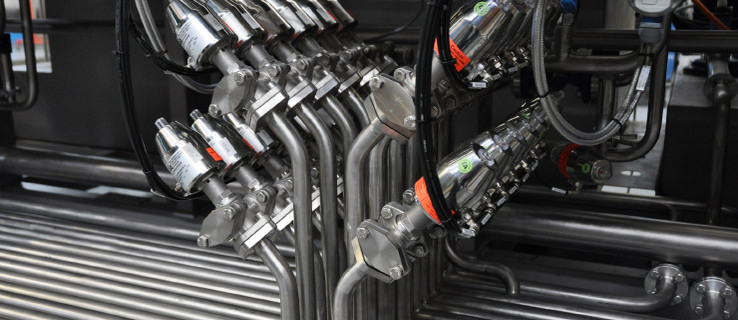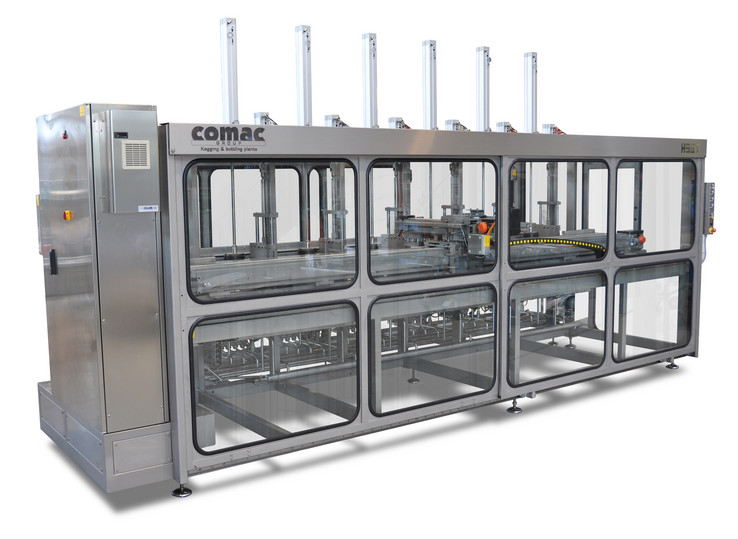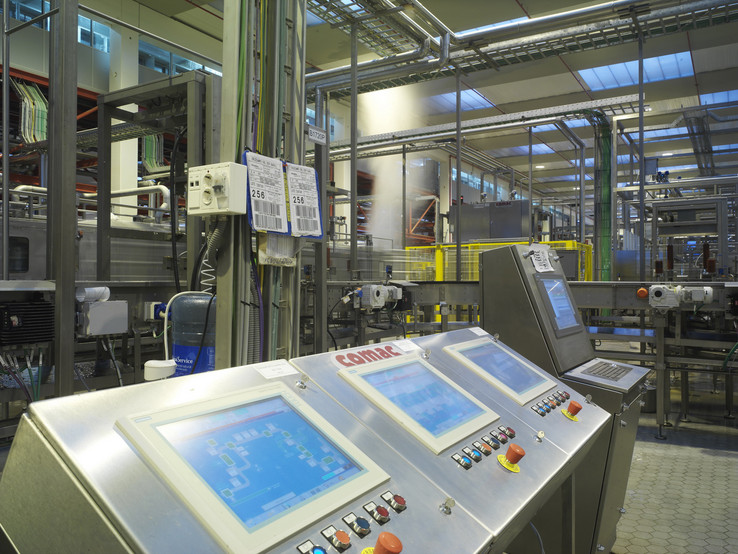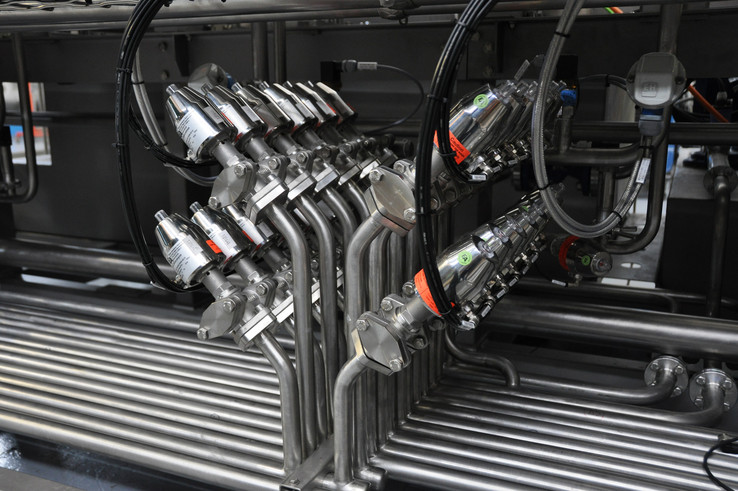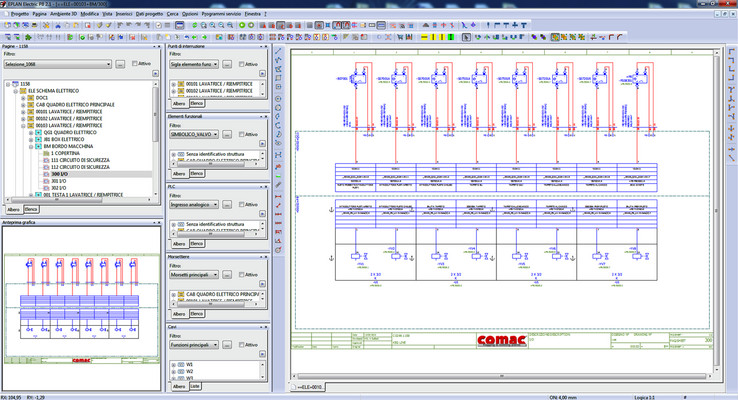The process is “running”
The integrated electrical and fluid power engineering at Comac had a lasting effect on the development of machinery.
Filling bottles and kegs with beverages necessitates sophisticated, highly automated machines in a variety of sizes to cater for microbreweries and major producers. Since 1990, the Italian company Comac in Bonate Sotto (Bergamo province) has been in the business of producing such bottling machines. Today, Comac has two manufacturing sites and counts the world’s leading beverage companies (water, beer, fruit juice, wine, syrup and spirits) among its customers. The integrated electrical and fluid power engineering had a lasting effect on the development of machinery at Comac.
Data consistently used
Production covers all bottling needs for the beverage industry, including handling and other devices used before and after the filling stage, such as keg feeders, conveyors, stackers, palletisers and packaging machines. The circuits of these machines are designed using EPLAN Electric P8 and EPLAN Fluid – integrated solutions that have had a lasting impact on the development of Comac machinery. Once the data of an article code has been recorded – as would be the case with a macro – it can easily be recalled for every new project. This means that during the design stage developers do not just drag the symbol onto the screen, but the symbol plus all related information. The information is used in the database so as to represent it as proper components with all functional characteristics (electrical and pneumatic). This brings clear benefits. On the one hand, there is now only one document for the assembly of the product. On the other hand, in terms of procurement, typing and careless errors are eliminated. Any order for a component immediately appears in the system, meaning it can be seen by both the technical & electrical officer and the pneumatic one. Furthermore, in the past, the person developing the software had to manually take the wiring diagram and use it to find the information needed to write the software program. Once the electric and pneumatic plans have been designed, all the information is automatically transferred into the SPS system. The bills of material for the ordering process are generated in parallel.
High quality documentation
This clearly cuts out errors and saves a significant amount of time. In addition, EPLAN automatically generates the technical documentation for the office that drafts the manuals and other documentation of the machines. This means that redundant documentation as well as non-automated information exchange are dispensed with. At Comac, they have also managed to automate the integration of the system with the PLC. All of the information concerning inputs/outputs and the related descriptions is automatically transferred by the system to the software office, along with all the information needed to operate the component and without any manual data input.
A question to Luca Cattaneo, Coordinator of Comac’s Design Office: How has design changed with this software?
“The full roll out of the EPLAN software did require about three months to input all the details about the components into the database and to include the forms of customisation needed for our machinery that was not in the system. EPLAN makes it possible to download the components needed for a machine and to optimise these with customised descriptions that contain all the features we need – from dimensions to the graphic symbol. It is a very “open” product and it allows – with minimal computer knowledge – easy customisation and knowledge provision in line with the company’s needs. Moreover, the database is constantly being added to and new features are developed to match the technological and manufacturing innovations included in our machines. All of the sectors that have been impacted by the changes are very happy with the results; indeed, they are looking for us to press forward with rolling out other systems like this.


